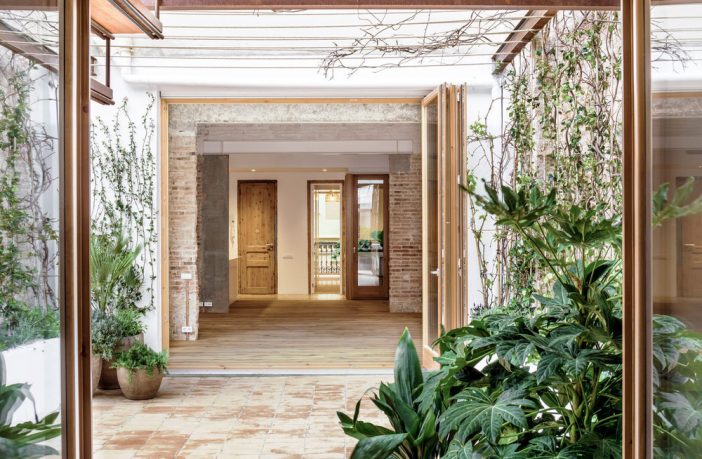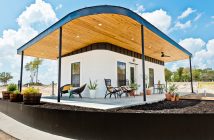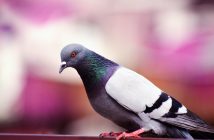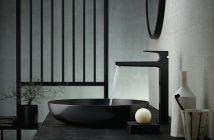Indoor gardens can contribute important benefits to home living, ranging from aesthetic beauty to improved health and productivity. Research has shown that indoor plants help eliminate indoor air pollutants called Volatile Organic Compounds (VOCs) that emanate from adhesives, furnishings, clothing, and solvents, and are known to cause illnesses. They also increase subjective perceptions of concentration and satisfaction, as well as objective measures of productivity. Indoor gardens may even reduce energy use and costs because of the reduced need for air circulation. These benefits complement the obvious aesthetic advantages of a well-designed garden, making the indoor garden an attractive residential feature on several fronts.

However, indoor gardens require many conditions to ensure that they grow smoothly. These conditions also vary depending on the type of plant(s) being grown and the methods in which they are displayed. To address these considerations, we’ve compiled an introductory list of requirements, common plant types, and display methods below.

Requirements
Light: Plants need light to photosynthesize, grow, and survive. Without light, plants may fail to grow completely, won’t produce flowers or fruit, and may even die. This consideration is particularly important for indoor gardens, which even if near a window, may not receive adequate light in winter months. Thus, indoor gardens will need particular lighting systems to ensure maximum growth.

Most plants function best with 14 to 16 hours of light and at least six hours of darkness per day. However, because plants have photoreceptors that only absorb specific wavelengths of light, regular lightbulbs won’t satisfy this requirement. High Intensity Discharge (HID) bulbs and Compact Fluorescent Systems are the most ideal light source for indoor gardens, providing the ideal amount of brightness and intensity for plant growth. Fluorescent lights and incandescent bulbs may not emanate enough light, making them better for individual house plants rather than entire gardens. Of course, light requirements will vary depending on the plants being grown.
Humidity: Indoor gardens often suffer from low humidity, which can cause plants to wither and leaves to turn brown. While plants tend to flourish in 50% humidity or higher, indoor humidity levels, particularly in the winter, may be sit as low as 10-20%. Solutions to this issue can range from running a humidifier, to daily misting, to even just placing a tray of water next to the garden.
Temperature: Most plants will thrive under temperatures ranging from 65 to 75 degrees Fahrenheit.
Soil depth: Soil depth will vary greatly depending on the plant being grown. Typically, between 18 to 20 inches of soil will suffice for most plants, though this number can drop to as low as 15 inches or reach as high as three feet. Depending on the plant, more shallow rooted species may also need to be staked or secured to a trellis.
Water: Plants grown in containers tend to dry out quicker than plants grown naturally in soil. Thus, it’s imperative that indoor gardens are watered adequately, though they shouldn’t be overwatered either. To ensure that plants are watered consistently, some designers and homeowners turn to solutions such as indoor drip watering systems, hydroponics, or self-watering pots.
Indoor drip watering systems water plants on a timer, making them highly consistent and relatively painless to use. However, with obvious tubes connecting the plants, they tend to be rather unsightly. Self-watering pots and planters hold a refillable reservoir and, as the name suggests, water their plants automatically. Unlike indoor drip watering systems, there are no external tubes and faucets to be seen. An aesthetically interesting variation on the self-watering pot is the stackable self-watering container, which essentially becomes a small vertical garden with a hidden automatic watering system. Another aesthetically interesting option is the hydroponic garden, which eliminates soil from the equation and instead supplies water and nutrients to the plants directly. This solution can use smaller containers, facilitates faster plant growth, and decreases the likelihood of plant infections, making it a popular choice.
Regardless of the type of watering system used, drainage is always an important consideration as well. Without adequate drainage, roots may rot in overly moist conditions. This requirement just means that planters should always have drainage holes and drip trays.
Common Plants

Gardens can serve different purposes in a home, be it purely aesthetic or to provide fruits and vegetables or a combination of both. Of course, depending on the intended use, different plants will be more effective. Considerations such as lighting, watering, and temperature may also impact plant choices.
Common House Plants: Spider Plant, Aloe Vera, Weeping Fig, Jade Plant.
Common Vegetables: Beets, carrots, herbs, kale, lettuce, mushrooms.
Flowers: Rose of China, Flamingo Flower, Kaffir Lily, various orchids.

Display Methods

There are a variety of different garden designs that have been innovated over time. Depending on the available square meters and the style of the interior, designers should choose the options that accentuate different aspects of the home and allow better use of space.
Raised Beds

Vertical Gardens
Tiered Planters



Walled, Elevated, and Sunken Gardens

Author: Lilly Cao
This article was first published in Arch Daily and is republished with permission.


































